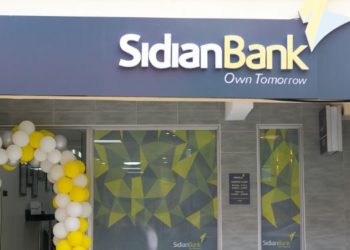On March 6, 2025, I wrote an article titled “The looming threat of taxes on remittances: Kenya must prepare,” warning that taxes could undermine the KES 640.8 billion in remittances Kenya received in 2024, a vital lifeline for households and economic stability. With the era of protectionism resurging, the U.S. “One Big Beautiful Bill Act,” a reconciliation bill, has introduced a 5.0% excise tax on remittances by non-U.S. citizens, a development that was bound to happen given global trends toward economic nationalism. This policy, far from a surprise, demands practical measures to safeguard Kenya’s economy.
Section 112105 of the bill imposes a 5.0% tax on transfers by non-U.S. citizens, including H-1B visa holders and green card holders. A USD 1,000 remittance to Kenya now loses USD 50, potentially reducing annual inflows by KES 17.0 billion. The bill, passed by the House Ways and Means Committee on May 12, 2025, awaits Senate approval. As the U.S. is Kenya’s top remittance source, this tax could shrink household budgets for education, healthcare, and small businesses, weaken the shilling, and inflate import costs.
Unlike the tax risks I highlighted in March, this U.S. policy, a predictable outcome of protectionist sentiment, directly raises cross-border transfer costs. Some senders may turn to informal channels, risking loss of financial transparency and increased fraud. This underscores the urgency for Kenya to implement practical measures to mitigate the impact and reduce its economic reliance on remittances.
First, Kenya should enhance digital payment platforms like M-Pesa, which offers low-cost transfers. By expanding its reach and reducing fees further, M-Pesa can absorb some of the tax’s burden. Second, investing in financial literacy programs is critical. Educating the diaspora on cost-effective transfer methods, such as mobile apps and remittance aggregator platforms, can help reduce costs and improve efficiency.
Instead of relying on unregulated solutions, Kenya should focus on strengthening partnerships between domestic banks and international money transfer operators (MTOs). By negotiating bilateral agreements that lower transaction fees or eliminate double taxation, Kenya can protect remittance flows. Additionally, encouraging the licensing of more competitive MTOs will foster market competition, leading to better pricing and service quality for remittance senders and recipients alike.
Beyond remittances, Kenya must diversify its economy to cushion the impact. Promoting export-led growth in agriculture and manufacturing, as I urged in March, can boost foreign exchange earnings. For instance, scaling up value-added agricultural exports like coffee and tea could offset remittance declines. Additionally, incentivizing domestic investment through tax breaks for small businesses can stimulate job creation, reducing dependence on diaspora funds. Strengthening vocational training programs to equip youth for local industries will further build resilience.
The protectionist wave, exemplified by this bill, is a wake-up call. While the Senate vote looms, Kenya cannot rely on external leniency. By leveraging digital platforms, fostering competitive remittance ecosystems, and diversifying revenue streams, Kenya can protect its economy. As I warned in March, proactive measures are essential to ensure remittances remain a pillar of stability in this new era.


















